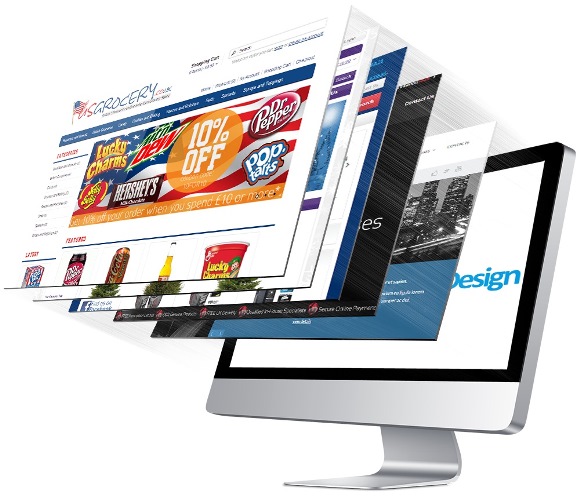When your online retail website stands out from what the competition offers, you are likely to attract more visitors. More visitors can mean more people who actually buy. Your job isn’t done the moment you put your small retail business online. To be successful, you need to constantly think about your customers and find out what they need to see to be drawn to a retail website where they’ll spend their money.
Invest in content marketing
Marketing gurus constantly bring up content marketing as a way for retailers to win attention both from search engines and from shoppers. Content marketing is the practice of attracting visitors to your retail website by providing them with free information.

What kind of information do they need?
The online shopping concept comes with an inherent problem – people have to be willing to buy products that they haven’t had a chance to see. Whether it’s clothing and accessories, electronics or food, they have no way of knowing what they’re buying until they actually get it.
Online shopping sites often don’t even give shoppers close-up product pictures. Even Amazon often offers nothing more than a couple of grainy pictures on its product pages. Online shoppers need to do a lot of tedious research online looking for user reviews, video reviews, close-up videos, pictures and other information that can help them learn about a product before they buy it.
The idea in content marketing is for every retail website to turn into an information resource on the products it sells. Product videos, excellent pictures, product reviews with offbeat information that isn’t found anywhere – this is what draws in people.
You need to look professional and trustworthy
A New York Times story a few years ago reported on a couple of 10-year-olds who got $4000 to build a website for a business that sold hard-to-find car parts. The store owner was happy with the site even if it looked amateurish. A surprising number of small online retail sites tap students in the family or other such talent to build their websites. The result, often, is that their site fails to inspire the trust that a professional look and design would be capable of.
Online retail businesses need to approach the trust issue from multiple angles.
• A respectable presence on Facebook is a good way of inspiring trust. When new customers see approving comments on Facebook, they will learn to trust you.
• User reviews and testimonials are a gold mine as far as inspiring trust is concerned. While most retailers do offer their customers the opportunity to write reviews, they don’t do much more. If your customers don’t seem to be interested in writing reviews, you need to do everything in your power to get them to write – including offering gift coupons for honest reviews.
• The shopping cart system you use needs to have the full complement of trust certifications. For instance, presenting the logos of VeriSign and Thawte on every page of your website, especially the checkout page, can inspire trust.
• Two out of three online shoppers take the trouble to read through the About Us page of any new and untested shopping site before they buy from it. It’s important to publish an honest and impressively written About Us page that tells us your visitors who you are and why you chose to enter your field.
• It’s impossible to inspire trust when your site isn’t properly proofread. People equate typos and poor grammar with unprofessionalism.
You need to constantly remind your visitors what the benefits of your products are
The title tag of each webpage on your shopping site – the descriptive headline on the title bar of each webpage that describes the page’s content – can have an enormous impact on sales. This is the copy that people searching on search engines get to see in their search results.
Many online stores make the mistake of simply using the title bar of each product page to display the name of the product that it shows. This is a bad idea because the name of your product is probably not famous enough or important to mean anything to your customers.
It’s a better idea to identify a problem that the product solves and to put that on the title bar. For instance, if you sell recliners, you don’t want to simply put 30 inch-wide leather recliner on your title bar. Instead, you can think of a few pet peeves that people generally have about recliners and think of something to say to address those, like Finally – A recliner that keeps your behind from going numb! or Recliners shouldn’t put you to work – here’s recliner that needs zero maintenance for 10 years. When these lines show up on the search engine results, they’ll actually mean something to your visitors.




